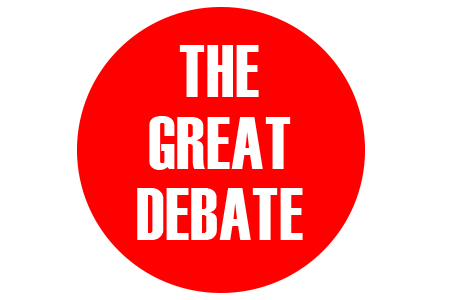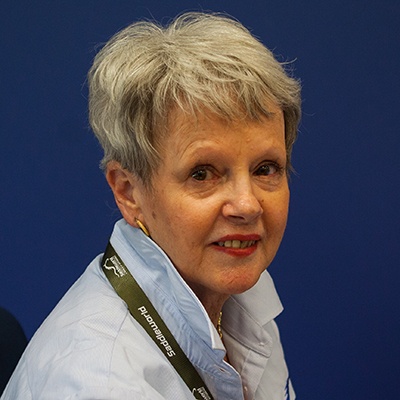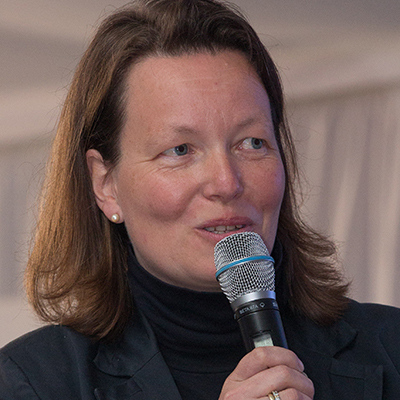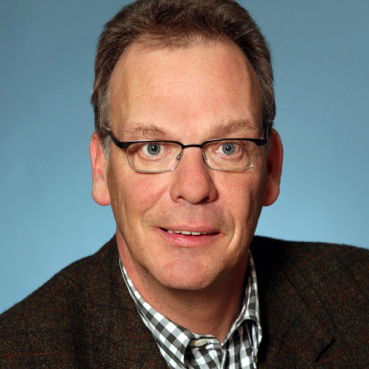 What makes an event successful? On a global level, the Euro Classics in Bremen, a huge indoor event, the Dressage Festival in Lingen, once marked as the venue for the 2015 German Nations Cup, and the Schenefeld Three Day Event have all been cancelled this year due to financial problems and lack of sponsorship. What are the reasons? Germany is hailed as a horse loving country, equestrian events have a great tradition and German riders and horses are sought after around the world. And let’s not forget the countless Olympic medals and Championship titles won by German athletes. It seems that this is not enough to attract sponsors to equestrian events these days. HSBC is to withdraw its worldwide sponsorship of eventing after a six-year partnership with the FEI. According to Giles Morgan, HSBC group head of sponsorship, the decision to end the partnership was a very difficult, but necessary one, following the banking sector’s recent tough economic times.
What makes an event successful? On a global level, the Euro Classics in Bremen, a huge indoor event, the Dressage Festival in Lingen, once marked as the venue for the 2015 German Nations Cup, and the Schenefeld Three Day Event have all been cancelled this year due to financial problems and lack of sponsorship. What are the reasons? Germany is hailed as a horse loving country, equestrian events have a great tradition and German riders and horses are sought after around the world. And let’s not forget the countless Olympic medals and Championship titles won by German athletes. It seems that this is not enough to attract sponsors to equestrian events these days. HSBC is to withdraw its worldwide sponsorship of eventing after a six-year partnership with the FEI. According to Giles Morgan, HSBC group head of sponsorship, the decision to end the partnership was a very difficult, but necessary one, following the banking sector’s recent tough economic times.
At the top end of the scale are the petro dollars supplied by Middle Eastern nations, e.g. the Furusiyya deal brokered with Saudi Arabia and the gigantic prize purses offered for showjumping events.
Are we facing similar problems in Australia? Or do our events have a safe future? THM has asked five event organisers of established events about their view and how they cope with an increasingly difficult financial and political climate.
– Ute Raabe
 ROSE READ
ROSE READ
Head of Sydney Eventing and Director of the Sydney CCI***
Are our events safe? In short they can be, on one condition, we continue to evolve our events to the changing world around us, not just changes in our sport, but changes in community interests, lifestyles and corporate investments.
When you look at the large and lasting events of the world, each one has a unique proposition that keeps riders and spectators coming back. What works at Badminton is different to Burghley or Kentucky, or any of the great showjumping shows. How they fund their events and what attracts spectators differs from event to event. In speaking with Mike Etherington-Smith, head of British Eventing, he said to me, what works in one part of Britain in attracting spectators along in one area, doesn’t necessarily work in another area of Britain.
I see this really applies to Sydney International Horse Trials. We are in Western Sydney and we have to evolve and grow our event in that context, we have to connect with our local community in a way that interests them. We can’t be ‘Badminton’ or a ‘Burghley’ with castles in the background and rolling green hills. While this is a true classic eventing image for many of us, the reality is SIEC isn’t that venue. So for our group we have been focusing on two things, getting the event right for the riders and their trusty followers and growing our spectator base. Creating our own unique offer that is relevant to where we are.
I think we nearly have the model right on the sport side, now we have to improve the spectator side. This year we are putting more effort in to making transport to and within the venue easier by providing a bus service from Centennial Park to SIEC, and an internal shuttle. We are also trying to make the event more family friendly by expanding our kids’ zone and shopping village, creating simple and affordable entertainment for families. Basic stuff you say, but by taking it step by step we hope to build a strong foundation that will ensure the event can sustain itself into the future.
If we can deliver an event that has top quality riding and lots of spectators then the corporate sponsors will be prepared to invest. If you can’t deliver real commercial value and returns they won’t, and rightly so. They are looking for value for money advertising that gets them in front of their target audience in a way that deepens their customer relationship in both brand and sales. But you have to keep in mind there are always ebbs and flows in the corporate dollar depending on the state of the economy, and many events like ours are a luxury marketing investment, so we will be the first to go when a company faces cut backs. Therefore it is vital you have a diverse revenue stream to cope with the changes.
Finally, land tenure is critical for any events survival. At SIEC we are lucky. It’s a dedicated equestrian venue, publicly owned, reducing the threat. However, because it is publicly owned we need to ensure the whole community values and uses it. This is why engaging the Western Sydney community is so critical to our event’s future. We are literally in the middle of what I call the ‘Centennial Park’ of Western Sydney, with a growing population around us, a great opportunity and asset for all to enjoy.
 TONI VENHAUS
TONI VENHAUS
Director of the Sydney CDI and Australian Dressage Championships
In previous years, major events such as the Sydney CDI and the Australian Dressage Championships have managed to return a profit that went back into new initiatives for the next event or into developing the sport in general. In recent years these two events have just managed to break even.
These two events are conducted under the umbrella of Dressage NSW, a not-for-profit organization. These events need to make a small surplus or at a minimum break even. To run at a loss is not sustainable.
Equestrian NSW provides financial support for these and other events held in NSW and funding is received for CDIs from Equestrian Australia from the International Competition Development Fund.
The main issue facing us is the ever-decreasing income from sponsorship and other funding sources. The cost of running CDIs (and the National Championships) is increasing and the income is not growing at the same rate, which means that in the end users (riders/owners) will have to pay more to participate. There is also a trend for sponsors to sign up to multi-event deals at a National EA level and this is starting to have a negative effect for some events run by state-based committees.
We have a loyal group of sponsors who have been with us for many years, but many are cutting back on the dollars they contribute. One factor to take into account is that we have more events on the calendar and sponsors only have so much to spend so the money is spread wider and thinner.
CDI events in Australia have traditionally received funding from the EA High Performance Program (which comes from ASC funds). In 2014 High Performance funding for CDIs has been withdrawn adding to the pressure on organizing committees of these events and in particular on the Sydney CDI. Commercial events such as Equitana provide a fantastic opportunity to showcase dressage to a wider audience. This does, however, come at a price for events such as the National Championships, which is held around the same time as Equitana. As a result, we have lost sponsors and exhibitors.
For the Sydney CDI, we have consistently managed to sell all available seats on the main day, Saturday.
In general, people are weighing up their options and deciding at the last minute whether to attend events. If live streaming is available, some will take that option rather attend an event, especially if the weather is not great. While this does showcase dressage to a wider audience, it also has the potential to reduce spectator numbers and that has a flow on for sponsors and lower sales for exhibitors.
The negative discussion on various website forums associated with the dressage selection for the London Olympic Games resulted in the loss of one long-term major sponsor. This was a significant blow for us as good sponsors are not easy to find or to replace.
Competition drives the sport and events will continue to go ahead but participation charges are likely to increase. Some events may have to modify or change their content or status to remain viable and attractive to competitors, sponsors and spectators.
 JULIA OTTO
JULIA OTTO
Event Director of the Luhmühlen CCI****
Are our events safe? To answer the question directly – no! If you feel safe, the end of your event is probably quite close. More than ever before, resting on your laurels endangers the future of your event.
The Sport has changed dramatically over the years and we need to adjust to these changes. Excellent conditions are indispensable – not only for riders and horses but for grooms and horse owners, too. You have to make them feel welcome and comfortable if you want them to return next year despite the full event calendar. It is not only the prize money! If these parameters are right, you will be able to sell your show to sponsors and media. Obviously eventing itself is not as easy to market as other disciplines. The dressage does not arouse a lot of interest and a big crowd. The main focus will always be on the cross country day. The final showjumping will again attract a lot less interest.
By successful marketing and media presence in the media the show becomes an event and a happening for the visitors. At the moment a lot of events are being cancelled. This is a pity. In Germany, a lot of the big traditional shows have disappeared from the event calendar and we very much regret this development. On the one hand it is important for the popularity of our sport that big events like Aachen and Wiesbaden are including eventing but I think that eventing as a discipline is so fascinating that it has enough potential to be presented at its own events.
Indirectly Luhmühlen may also be affected by the discontinuation of events. It is vital that the FEI has decided to continue the FEI Classics™ without a sponsor for the series. The merging of the four-star-events around the world is a very important marketing tool and has promoted Luhmühlen’s success story, in connection with the success of the German riders. The all-year amount of work and the required budget that are needed to turn the potential of eventing into success has increased considerably.
And we have to work hard on a daily basis to keep our event safe!
 FRIEDRICH OTTO-ERLEY
FRIEDRICH OTTO-ERLEY
Head of the Competition Sports Department of the German Equestrian Federation (FN) and Deputy Director of the German Olympic Committee (DOKR)
Quite often lack of sponsorship is causing events to be cancelled, sometimes there are other circumstances involved, but these are not always made transparent to the FN. Though it seems that, on a whole, the equestrian event scene is rather consolidated, as soon as events disappear, new ones are created. There’s even talk of market saturation, there are so many events now that it almost becomes impossible to really value the key international competitions. This is underlined by the rise in events in new ‘exotic’ locations.
The worldwide development of our sport, particularly showjumping, is a positive one and simply shows that globalisation is also affecting horse sport. Event organisers in Germany sometimes struggle with this. The question is how secure are these new mega-events? While the top German events have an often decade-long history and established reputation in the international scene, it is still somewhat doubtful whether these new events can be sustainable in the long term.
Many event organisers would say that it has become more difficult to attract new sponsors in recent years, particularly if TV ratings have dropped. Horse sport also suffered from negative publicity after the doping incidents during and after the 2008 Hong Kong Games. Generally corporations direct their sponsorship money to one or two key sports, the ones with a high general public and media interest – to the disadvantage of other sports.
It is our job to create the best possible conditions and a positive environment, within our capabilities. We have to ensure that the sport is clean, no doping, no practice of controversial training methods.
The FN also manages the contracts with the national TV networks and represents the best interests of the sport. In due course we will announce a new strategic alliance with a leading equestrian Internet portal to maximise the opportunities that Internet TV offers.
The FN is currently looking at new concepts and developing solutions to keep our events safe, but we have only just begun!
This article first appeared in the May 2014 issue of THM.
